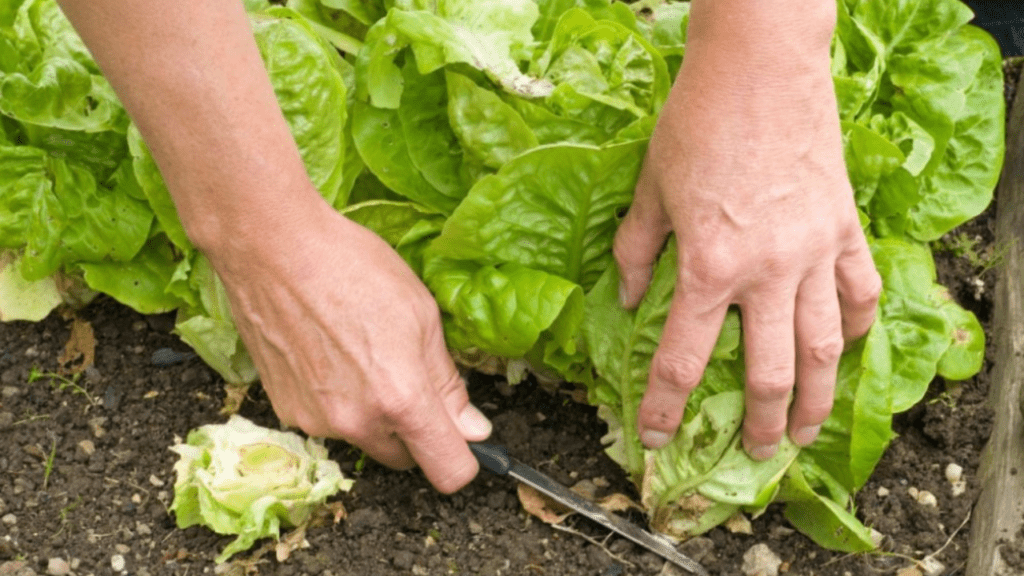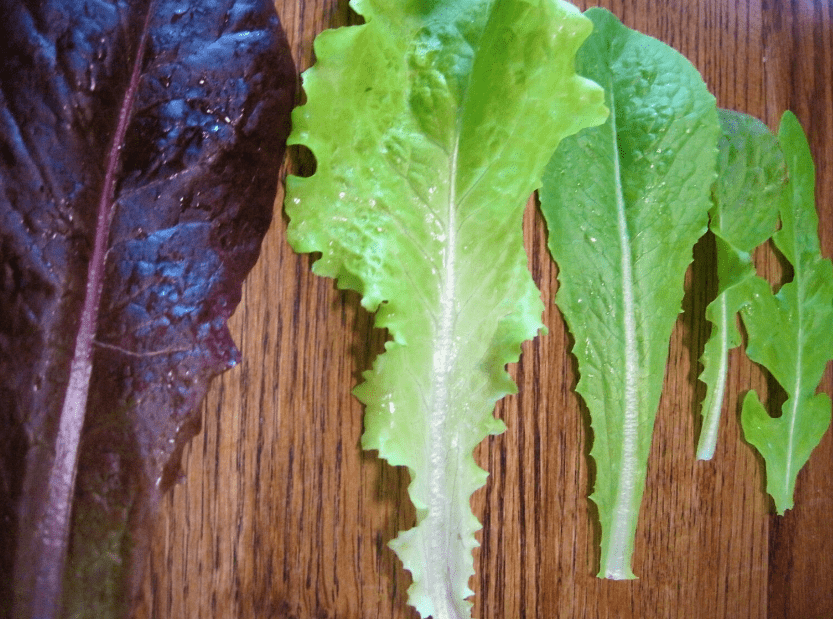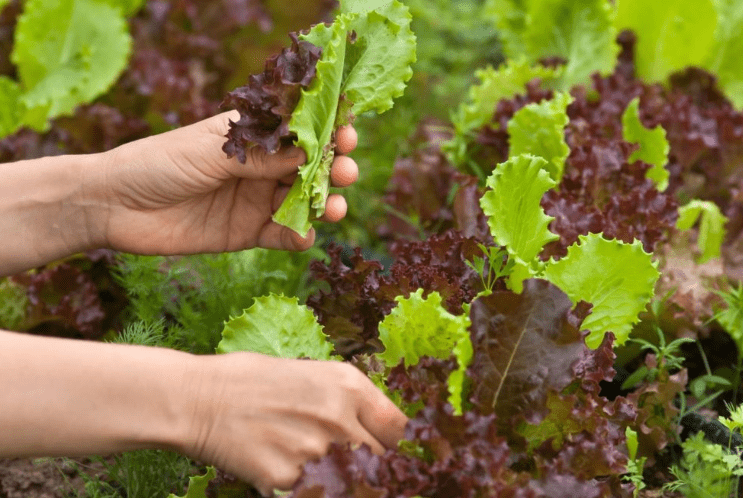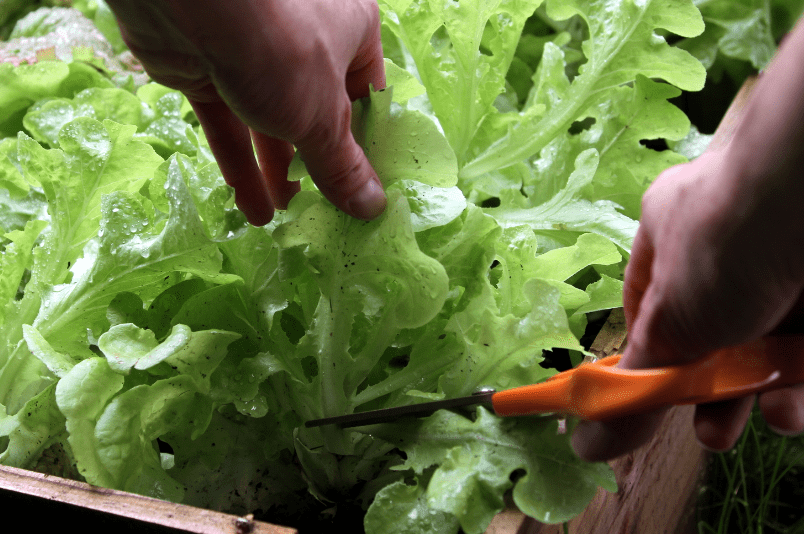
When to Harvest Lettuce: A Beginner’s Guide to Perfect Timing
Knowing when to harvest lettuce is crucial for any gardener aiming to enjoy the freshest, most flavorful greens. Harvesting at the right time not only enhances the taste and texture of your lettuce but also ensures that you’re getting the most nutritional value from your crop. In this article, we’ll explore the signs that indicate your lettuce is ready to be picked, the best harvesting techniques, and tips on how to keep your lettuce fresh after harvest.
Table of Contents
ToggleWhy Knowing When to Harvest Lettuce is Crucial
Flavor and Texture: Explain how timing affects the taste and tenderness of lettuce leaves.
Timing plays a crucial role in the taste and tenderness of lettuce leaves. Harvesting lettuce at the right time is essential for achieving the best flavor and texture. If you harvest too early, the leaves may be underdeveloped and lack the full flavor potential. On the other hand, if you wait too long to harvest, the leaves can become bitter and tough. The optimal timing for harvesting lettuce is when the leaves are young, tender, and at their peak flavor. This is typically when the leaves are full and have a crisp, vibrant texture. By paying attention to the timing of your harvest, you can ensure that you are enjoying the freshest and most delicious lettuce from your garden.
Nutritional Value: Discuss how harvesting at the right time preserves the nutrients in the lettuce.
Harvesting lettuce at the right time is crucial for preserving its nutritional value. When lettuce is harvested at the peak of its freshness, it contains the highest levels of vitamins and minerals. This is because the nutrients in lettuce begin to degrade over time, so the sooner it is consumed after harvesting, the more nutrients it retains. Additionally, harvesting at the right time ensures that the lettuce is at its most flavorful and tender, making it a more enjoyable and nutritious addition to your meals. By paying attention to the timing of your harvest, you can maximize the nutritional value of the lettuce you grow.
Plant Health and Productivity: Highlight how proper timing can lead to multiple harvests and healthier plants.
Harvesting lettuce at the right time is crucial for preserving its nutritional value. When lettuce is harvested at the peak of its freshness, it contains the highest levels of vitamins and minerals. This is because the nutrients in lettuce begin to degrade over time, so the sooner it is consumed after harvesting, the more nutrients it retains. Additionally, harvesting at the right time ensures that the lettuce is at its most flavorful and tender, making it a more enjoyable and nutritious addition to your meals. By paying attention to the timing of your harvest, you can ensure that you are enjoying the freshest and most delicious lettuce from your garden.
Proper timing can also lead to multiple harvests and healthier plants. Harvesting lettuce at the right time promotes plant health and encourages continued productivity. By harvesting the outer leaves of the lettuce plant first, you allow the inner leaves to continue growing and developing, leading to multiple harvests from the same plant. This not only maximizes the yield from your garden but also promotes the overall health and vitality of the lettuce plants. By paying attention to the timing of your harvest, you can maximize the nutritional value of the lettuce you grow while also promoting plant health and productivity in your garden.
Understanding Different Types of Lettuce
There are several different types of lettuce, each with its own unique flavor and texture. Some common types of lettuce include romaine, butterhead, iceberg, and leaf lettuce. Romaine lettuce is known for its crisp texture and slightly bitter taste, making it a popular choice for salads and sandwiches. Butterhead lettuce has a soft, buttery texture and a mild, sweet flavor, making it a great choice for salads and wraps. Iceberg lettuce is known for its crunchy texture and mild flavor, making it a versatile option for a variety of dishes. Leaf lettuce comes in a variety of colors and textures, and is often used in mixed salads for its delicate and slightly spicy taste. Understanding the different types of lettuce can help you choose the best variety for your specific culinary needs and preferences. Whether you’re looking for a crunchy, bitter option or a soft, sweet option, there’s a type of lettuce out there for you.

Signs That Your Lettuce is Ready to Harvest
Visual Indicators: Describe how color, size, and leaf texture indicate readiness.
Lettuce can be harvested when the leaves are firm and have reached a desirable size. The color and texture of the leaves can also indicate readiness for harvest. Romaine lettuce is ready to be harvested when the outer leaves are dark green and firm, while the inner leaves are lighter in color and more tender. Butterhead lettuce is ready to be harvested when the leaves form a loose head and have a soft, buttery texture. Iceberg lettuce is ready when the head is firm and compact, with outer leaves that are light green in color. Leaf lettuce is ready to be harvested when the leaves are vibrant in color and have a crisp, tender texture. These visual indicators can help you determine the best time to harvest your lettuce for optimal flavor and texture.

Growth Stages: Explain how to recognize the maturity of lettuce based on its growth stage.
Lettuce can be harvested at different growth stages depending on the type of lettuce you are growing. One way to recognize the maturity of lettuce is by observing the leaves. Romaine lettuce is ready to be harvested when the outer leaves are dark green and firm, while the inner leaves are lighter in color and more tender. Butterhead lettuce is ready to be harvested when the leaves form a loose head and have a soft, buttery texture. Iceberg lettuce is ready when the head is firm and compact, with outer leaves that are light green in color. Leaf lettuce is ready to be harvested when the leaves are vibrant in color and have a crisp, tender texture. These visual indicators can help you determine the best time to harvest your lettuce for optimal flavor and texture. It’s important to pay attention to the growth stages of your lettuce to ensure that you are harvesting it at the right time for the best taste and quality.
General Timeframes for Harvest: Provide average days to maturity for each lettuce type.
Lettuce can take anywhere from 45-60 days to reach maturity, depending on the type. Romaine lettuce generally takes around 60 days to mature, while Butterhead lettuce takes about 55 days. Iceberg lettuce can take around 80-90 days to reach maturity, and Leaf lettuce usually takes around 45-50 days. It’s important to check the specific variety of lettuce you are growing for more accurate timing. Keeping an eye on the visual indicators of maturity, such as leaf color and texture, can also help you determine the best time to harvest. Harvesting your lettuce at the right time will ensure the best flavor and quality.
How to Harvest Lettuce Properly
Tools and Equipment: List the necessary tools like scissors, knives, and containers for collecting lettuce.
When it comes to harvesting lettuce, there are a few tools and equipment that you will need. Scissors or a sharp knife are essential for cutting the lettuce from the stem. It’s important to use a clean and sharp tool to prevent damaging the lettuce leaves and to ensure a clean cut. You will also need containers for collecting the harvested lettuce. These can be baskets, crates, or plastic bags to keep the lettuce fresh and protected during transport. It’s important to handle the lettuce carefully to avoid bruising or damaging the leaves.
As for general timeframes for harvesting, lettuce can take anywhere from 45-60 days to reach maturity, depending on the type. Romaine lettuce generally takes around 60 days to mature, while Butterhead lettuce takes about 55 days. Iceberg lettuce can take around 80-90 days to reach maturity, and Leaf lettuce usually takes around 45-50 days. It’s important to check the specific variety of lettuce you are growing for more accurate timing. Keeping an eye on the visual indicators of maturity, such as leaf color and texture, can also help you determine the best time to harvest. Harvesting your lettuce at the right time will ensure the best flavor and quality.
Step-by-Step Harvesting Guide:
Leaf Lettuce: How to use the cut-and-come-again method or full-plant harvest.
Leaf lettuce can be harvested using the cut-and-come-again method or a full-plant harvest. When using the cut-and-come-again method, you can start harvesting the outer leaves once the plant has reached a height of 3-4 inches. It’s important to handle the lettuce carefully to avoid bruising or damaging the leaves. Simply use a sharp pair of scissors to cut the outer leaves, leaving the inner leaves to continue growing. This method allows for multiple harvests from a single plant.
For a full-plant harvest, you can wait until the lettuce has reached its full maturity based on the specific variety you are growing. Romaine lettuce generally takes around 60 days to mature, while Butterhead lettuce takes about 55 days. Iceberg lettuce can take around 80-90 days to reach maturity, and Leaf lettuce usually takes around 45-50 days. It’s important to check the specific variety of lettuce you are growing for more accurate timing.
Keeping an eye on the visual indicators of maturity, such as leaf color and texture, can also help you determine the best time to harvest. Harvesting your lettuce at the right time will ensure the best flavor and quality. Whether using the cut-and-come-again method or a full-plant harvest, enjoying your own homegrown lettuce can be a rewarding experience.

Romaine and Butterhead Lettuce: Techniques for cutting the head while leaving the base for potential regrowth.
Growing your own lettuce at home can be a rewarding experience. When it comes to harvesting Romaine and Butterhead lettuce, there are specific techniques you can use to ensure a full-plant harvest while leaving the base for potential regrowth. It’s important to wait until the lettuce has reached its full maturity based on the specific variety you are growing. Romaine lettuce generally takes around 60 days to mature, while Butterhead lettuce takes about 55 days. Iceberg lettuce can take around 80-90 days to reach maturity, and Leaf lettuce usually takes around 45-50 days. Keeping an eye on the visual indicators of maturity, such as leaf color and texture, can also help you determine the best time to harvest. When cutting the head of the lettuce, it’s best to leave about 1-2 inches of the base intact. This allows the plant to potentially regrow and produce a second harvest. Whether using the cut-and-come-again method or a full-plant harvest, enjoying your own homegrown lettuce can be a delicious and sustainable addition to your meals.
Crisphead Lettuce: Proper methods for harvesting dense, fully mature heads.
Proper methods for harvesting dense, fully mature heads of crisphead lettuce are crucial to ensure a successful and bountiful harvest. It’s important to wait until the lettuce has reached its full maturity based on the specific variety you are growing. Romaine lettuce generally takes around 60 days to mature, while Butterhead lettuce takes about 55 days. Iceberg lettuce can take around 80-90 days to reach maturity, and Leaf lettuce usually takes around 45-50 days. Keeping an eye on the visual indicators of maturity, such as leaf color and texture, can also help you determine the best time to harvest. When cutting the head of the lettuce, it’s best to leave about 1-2 inches of the base intact. This allows the plant to potentially regrow and produce a second harvest. Whether using the cut-and-come-again method or a full-plant harvest, enjoying your own homegrown lettuce can be a delicious and sustainable addition to your meals.
Best Practices for Post-Harvest Care
Immediate Cooling: Importance of cooling lettuce quickly after harvest to retain freshness.
It’s important to cool lettuce quickly after harvest in order to retain its freshness. This can be done by immediately placing the lettuce in a refrigerator or a cooler with ice packs. Cooling the lettuce slows down the natural process of decay and helps to preserve its crispness and flavor. Proper cooling can also help to prevent wilting and browning of the leaves. By taking the time to cool your lettuce immediately after harvest, you can ensure that it stays fresh and delicious for longer, allowing you to enjoy the best possible quality in your salads and other dishes.
Storage Tips: How to store lettuce to keep it fresh for as long as possible.
After harvesting your lettuce, it’s important to cool it quickly to retain its freshness. You can do this by immediately placing the lettuce in a refrigerator or a cooler with ice packs. Proper cooling can help prevent wilting and browning of the leaves, as well as slow down the natural process of decay. When storing lettuce, it’s best to wash and dry the leaves thoroughly, then wrap them in a paper towel and place them in a resealable plastic bag with any excess air removed. Store the lettuce in the crisper drawer of your refrigerator, where it will stay fresh for as long as possible. Remember to check the lettuce regularly and remove any leaves that have started to wilt or brown. By following these storage tips, you can enjoy your homegrown lettuce for as long as possible and add a delicious and sustainable addition to your meals.
Common Mistakes to Avoid When Harvesting Lettuce
Harvesting Too Early or Too Late: Consequences of improper timing, including bitter or tough leaves.
Harvesting lettuce at the right time is crucial to ensure its taste and texture. Harvesting too early or too late can result in bitter or tough leaves. It’s important to pay attention to the size and shape of the lettuce leaves to determine the best time for harvesting. Lettuce leaves should be crisp and have a bright color when harvested at the right time. If you harvest too late, the leaves may become tough and bitter. On the other hand, if you harvest too early, the leaves may not have fully developed their flavor and texture. It’s important to also consider the weather conditions before harvesting, as extreme heat can cause lettuce to bolt, resulting in bitter leaves. By harvesting at the right time, you can ensure the best quality and flavor for your homegrown lettuce.
Using the Wrong Tools: Risks of damaging the plant by not using sharp tools.
When it comes to harvesting lettuce, using the wrong tools can lead to damaging the plant. It’s important to use sharp, clean tools to ensure a clean cut and minimize damage to the plant. Dull or dirty tools can result in crushing or tearing the leaves, which can impact the plant’s ability to continue growing. Additionally, using the wrong tools can also increase the risk of disease transmission from one plant to another. By using sharp and clean tools, you can ensure a smooth and clean cut, allowing the plant to heal quickly and continue growing healthily. It’s important to invest in quality gardening tools and to regularly maintain and sharpen them to ensure the best results when harvesting your lettuce.
Ignoring Weather Conditions: How hot weather can cause lettuce to bolt and what to do about it.
When it comes to harvesting lettuce, it’s important to be mindful of the weather conditions. Hot weather can cause lettuce to bolt, which means it will send up a seed stalk and the leaves will become bitter. To prevent this, it’s important to harvest lettuce in the early morning or late evening when the temperatures are cooler. Additionally, you can provide shade to your lettuce plants during the hottest part of the day to protect them from the heat. It’s also important to keep the soil consistently moist to help prevent bolting. By being aware of the weather conditions and taking proactive measures, you can ensure a successful lettuce harvest.
Conclusion
In conclusion, the key to harvesting lettuce at the perfect time is to pay attention to the signs the plant is giving you. Look for firm, full heads of lettuce with vibrant green leaves. Avoid waiting too long to harvest, as the lettuce can become bitter and tough. By following these tips and paying close attention to your lettuce plants, you can ensure a bountiful and delicious harvest. Happy gardening!
Frequently asked questions And Answer
You can tell when your lettuce is ready to harvest when the leaves are large and have a full, crisp texture. It’s best to harvest in the morning when the leaves are at their freshest.
It’s best to harvest lettuce in the morning when the leaves are at their peak freshness. This is when the leaves are crisp and full of flavor.
The best way to harvest lettuce is to use a sharp knife or scissors to cut the leaves at the base, leaving about an inch of stem attached to the plant. This allows the plant to continue growing and producing more leaves.
You can harvest your lettuce as often as the leaves are mature and ready to be picked. This can be every few days, depending on the variety and growing conditions.
If you wait too long to harvest your lettuce, the leaves may become bitter and tough. It’s best to harvest when the leaves are still young and tender.
Yes, you can store harvested lettuce in the refrigerator for up to a week. It’s best to wash and dry the leaves before storing them in a plastic bag or container with a paper towel to absorb any excess moisture.
Lettuce can be harvested in the winter, but it’s best to do so during milder temperatures to prevent the leaves from freezing or becoming damaged.
Lettuce can be harvested throughout the growing season, but it’s best to harvest before the plant bolts and goes to seed. This is usually in the early to mid-summer for most varieties.
